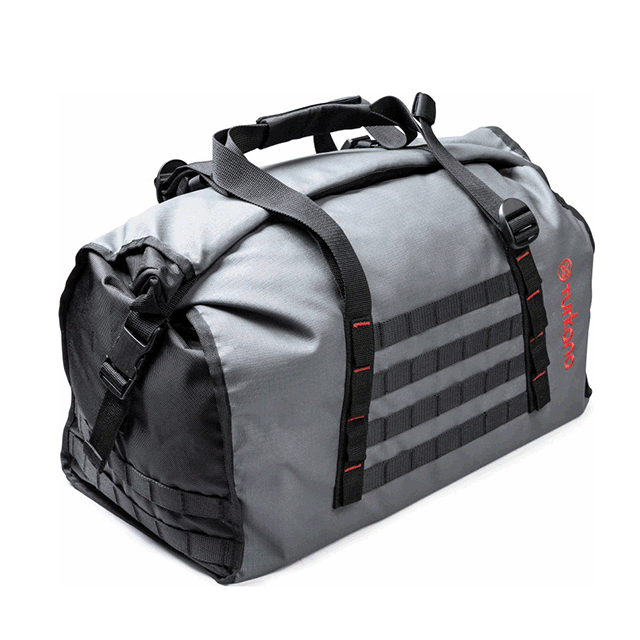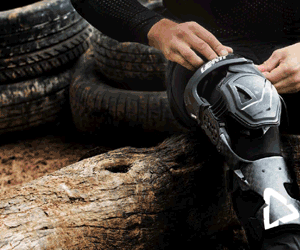“Owing to the altitude man experiences a completely different sense of reality, not only visually, but also psychologically. The low population density in highland areas, lack of social infrastructures, and the depletion of vegetation turn vast areas into stone deserts. Creating for the rider the atmosphere of conquering the Moon or Mars. On the entire route, due to a perceptible change in altitude and climatic range, the landscape changes from fertile apple orchards and rose gardens of the Kullu valley, through passes, plateaus, and rocky gorges to the peaks of the majestic mountains. On the way, there are crystal alpine lakes, waterfalls, glaciers, rivers, and streams, some of which need to be crossed without the use of bridges.” – Stanislav Filippov

Stanislav Filippov is first and foremost a traveler, initially hailing from St. Petersburg in Russia, that in recent years has found his calling as a guide to other travelers in India. “Like many of my fellow countrymen who came to Goa, I’d never had the chance to throw a leg over two wheels. The climatic conditions, compactness of roads, and the economy make two-wheeled vehicles a practical and common means of transportation. And since I could only get hold of a 1998 Royal Enfield Bullet, left by my friends for storage, the legendary machine became my ride of choice.”

“Although I must add that to start this machine, you sometimes have to resort to black magic and pagan spells. However, having successfully saddled the rusted cannon, I mostly did not doubt my superiority over inanimate objects. And in any case, as the saying goes; ‘what doesn’t kill you makes you stronger.’ So having learned all the troubles and tribulations of Royal Enfield operation and maintenance not only by hearsay, I didn’t hesitate to choose it as my guide to the citadel of the Himalayas seven years after we had first gotten acquainted.”

In a way, the idea for Himalayan Eagles almost literally hit Stanislav on the head. “I was making my way through the scree, which blocked the road to the transport connection near the Rohtang pass at the foothills of the Indian Himalayas. I was getting into the thick of traffic that was accumulating near the scene of a recent avalanche. Being forced to stop, I looked out at the crowd that had formed. Suddenly I had the feeling that I was on the set of a “Mad Max” photoshoot. Several groups of bikers were noisily talking and impatiently roaring with heated engines. In their clothes and the design of their motorcycles, I felt the influence of Buddhist and Hindu ethnic styles. My involvement in this free Himalayan fraternity of souls and motors caused in me a desire to create my own community. To introduce to its participants this pure experience that I had on the mountain serpentines of God’s Land.”

Next came the name, and it was while pondering over a symbol that could signify the spiritual unity of like-minded people that Stanislav remembered how he’d often observed giant, majestic eagles soaring among gloomy and bare rocks. “Himalayan Eagles for me is a symbol of freedom, but that is also united in companionship. Ready to enjoy the ride and any adventures that come with the open road. Also, If you delve into the history, then one of the most famous predecessors who overcame this route was the 19th-century spiritualist and artist Nicholas Roerich. He left diaries and stunningly atmospheric canvases of mountains and received international recognition for his travels and documentation.”

“It should be noted that since those times, the spirit of these places hasn’t undergone any significant changes. The region of Ladakh, through which the famous Silk Road passed in the middle ages is called “Little Tibet,” due to the cultural similarity. To this day, walking into one of the dusty souvenir shops in Leh, the capital of the area, the eye involuntarily looks for artifacts of deep antiquity. The influence of the culture of Tibet on Ladakh is undoubtedly manifested in Buddhism. Visits to the famous medieval Tiksi and Shey Buddhist monasteries-fortresses usually becomes a big part of the cultural travel program.”

“The road between Manali and Lech is one of the highest roads in the World. Most of the nine-day trip takes place at an altitude in the range of 2-2.5 mi / 3-4 km above sea level. At peak times, the altitude reaches around 3.5 mi / 5.5 km, which is comparable with the height of Kilimanjaro. To better illustrate what a member of The Valley of Winds journey can experience, I will try to revive in memory one of the climactic moments from last years expedition. Around 18.5 mi / 30 km from the Sarchu camp, one of the points on the Manali-Leh road, traffic was suspended by the rapid flow of water from a melting glacier about 1.8 mi / 3 km up the gorge. The water level at the crossing reached shoulder height, while up and downstream the valley surface was liberally speckled with deep gullies and rocky ravines, which also constituted a serious obstacle.”

“Having reached the crossing at noon, the participants of the convoy were locked in at an altitude of 2.8 mi / 4.5 km, without being able to continue the route and go down to a comfortable altitude to rest for the night. Most of the team was experiencing mountain sickness, manifested in headache, dizziness, and fatigue. It was decided to wait till the melting of glacier reduced enough to make crossing the flow possible in the afternoon when the level of water was expected to subside. However, riding the technically challenging part of the remaining road to the camp at Sarchu during the night was also a dangerous proposition. As the organizer, I felt responsible for group safety, but at the same time, despite the use of prescribed medications, I was also experiencing the symptoms of altitude sickness. We found a way out of this situation by examining fords through the flow at points where the water flow was widespread further downstream. After bringing most of the riders through the explored section and sending them on safely to the overnight camp before dusk, a team of technicians and I were left to get stalled and thrown motorcycles out of impassable places. As a result of this work, our travel plan had not changed significantly, and participants all had a true high pass experience.”

For the journey, Stanislav uses a rented fleet of Royal Enfield motorcycles, supported by a dedicated technical team that accompanies participants throughout the route. Currently, the choice of model varies between Royal Enfield Himalayan or Royal Enfield Classic 500 depending on availability when riders book their adventure. “Since travel time is a critical factor, and the level of service repair is sometimes akin to magic tricks, high technology, and electronics, paradoxically, may become a stumbling block on the path to the Himalayan peaks. If we compare the running characteristics of these motorcycles, then the Himalayan, due to the geometry of the frame and suspension certainly wins in terms of comfort when traveling off-road. However, the lack of a kick starter, along with unstable electronics, may turn into a problem.”

Of course, on the other hand, overcoming long distances over technically challenging terrain on a vintage motorcycle like the RE Bullet may at first seem like an undue inconvenience to some. However, the endurance and resilience of the RE Classic have repeatedly been tested in my own experience. The most common problems with the operation of the motorcycle in this journey are the wear of clutch discs caused by in-proper gear shifting, overheating of the engine, and loss of power when refueling by low-quality petrol. Educating the riders on the quirks of the machines and the support of the mechanics’ team accompanying the group throughout the route helps in preventing most issues.”

Without a doubt, the journey along The Valley of Winds route is a test of endurance for both the bike and the rider. With a planned schedule of up to 125 mi / 200 km per day that due to the technical complexity of the route can take anything from six to twelve hours on a bike. Coupled with the altitude and the visceral experience of staying in tent camps at low temperature, the journey makes for an experience easily described as “out of the usual comfort zone.” However, Stanislav’s personal life formula that without overcoming great difficulties, there are no genuinely significant accomplishments, stands true for this adventure. “Standing on the ‘Top of the World” and contemplating it in its entirety, you can see and feel what was inaccessible to so many that came before. An authentic experience you will never be able to replicate.”

For more on the upcoming adventures of the Himalayan Eagles check out their website or follow along on Instagram and follow Stanislav on Facebook.





Good day
Could you please let me know when these tours take place,and what are the costs involved
Thank you
Regards
Andrew
Hi Andrew,
Thanks for enquiry. The closest dates are 4-16 of Sept. 2019. The group meets in New Delhi, India.
The tour coasts is 1500$ including bike rent, feul, back up car, hotels.
Flight tickets, food and personal expences are not included.
Please contact me on my email or whatsapp for further details.
Stan,
+919857525328